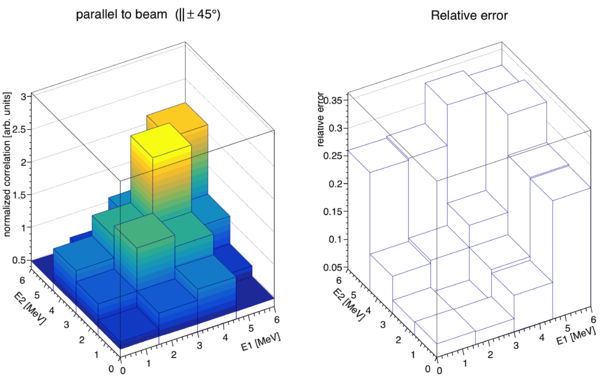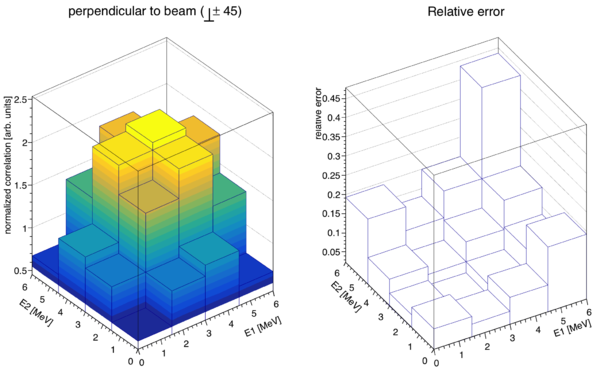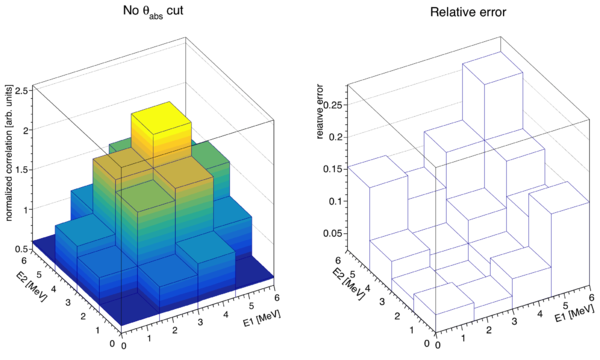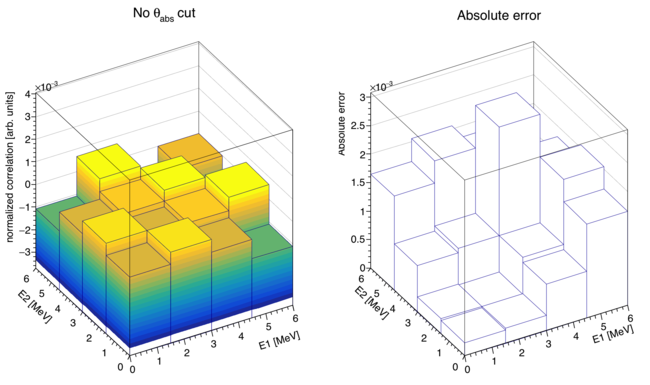Difference between revisions of "2NCorr E1 E2 correlations VS theta abs"
(→D2O) |
|||
| Line 1: | Line 1: | ||
| + | [[Production Analysis|go_back]] | ||
| + | |||
Here I examine correlations between the energy of each of two the neutrons from correlated pairs, and also how theta_abs effects the relationship. | Here I examine correlations between the energy of each of two the neutrons from correlated pairs, and also how theta_abs effects the relationship. | ||
| Line 23: | Line 25: | ||
[[File:2NCorrE1VSE2D2ONocut.png|650px]] | [[File:2NCorrE1VSE2D2ONocut.png|650px]] | ||
| + | |||
| + | |||
| + | (python file: E1_E2.py) | ||
| + | |||
| + | [[Production Analysis|go_back]] | ||
Revision as of 05:09, 20 February 2018
Here I examine correlations between the energy of each of two the neutrons from correlated pairs, and also how theta_abs effects the relationship.
The z-axis of the plots that follow can be interpreted as the fractional increase in the event rate for correlated neutrons, when compared to the corresponding event rate for uncorrelated neutrons.
The theta_abs cuts require that both neutrons be within the specified range.
DU
Below is the result for DU, with a theta_abs cut of +/- 45 degrees from the beam line:
Here is the result with a cut of +/- 45 degrees from the plane perpendicular to the beam line:
Here is the result with no cuts:
D2O
As an idiot check, I performed the same analysis with D2O. Since all neutrons from D2O are uncorrelated, the correlation should be zero for all events. This is what is seen in the plots below (notice that the scale is 10^-3 on the z-axis).
(python file: E1_E2.py)



